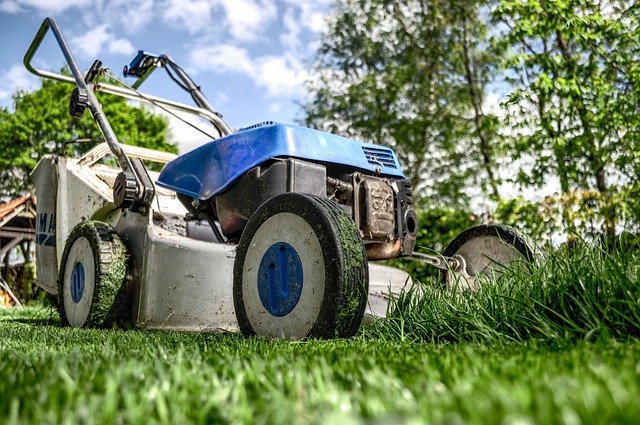Learn more about lawn mowing
Maintaining a beautiful, healthy lawn requires more than just occasional cutting. Proper lawn mowing involves understanding timing, technique, and equipment selection to promote grass health and create an attractive outdoor space. From choosing the right mower height to establishing a consistent schedule, effective lawn care combines science with practical knowledge that any homeowner can master.

Learn more about lawn mowing
A well-maintained lawn serves as the foundation of attractive landscaping and provides numerous environmental benefits. Understanding proper mowing practices helps homeowners achieve healthier grass while reducing maintenance challenges throughout the growing season.
Discover Essential Lawn Mowing Tips
Successful lawn mowing begins with timing and frequency. Most grass types benefit from cutting when they reach one-third above their ideal height. Cool-season grasses like fescue and bluegrass typically require mowing every 5-7 days during peak growing seasons, while warm-season varieties such as Bermuda and Zoysia may need attention every 7-10 days.
Sharp mower blades are crucial for clean cuts that heal quickly and resist disease. Dull blades tear grass rather than cutting cleanly, creating brown tips and increasing vulnerability to pests and pathogens. Professional blade sharpening twice per season ensures optimal performance.
Mowing patterns should vary each session to prevent soil compaction and encourage upright grass growth. Alternating between horizontal, vertical, and diagonal patterns distributes wear evenly across the lawn surface.
Understand the Benefits of Regular Mowing
Consistent mowing promotes dense, healthy turf by encouraging lateral growth and preventing weeds from establishing. Regular cutting stimulates grass plants to develop stronger root systems and increases drought tolerance over time.
Proper mowing height maintains grass health while reducing water requirements. Taller grass shades soil, reducing evaporation and suppressing weed germination. Most lawn grasses perform best when maintained at 2.5 to 3.5 inches, though specific varieties may have different optimal ranges.
Regular mowing also prevents seed head formation in many grass types, directing plant energy toward leaf and root development rather than reproduction. This results in thicker, more attractive turf coverage.
Explore Different Mowing Techniques
The one-third rule remains the most important mowing principle: never remove more than one-third of the grass blade length in a single cutting. Removing too much at once stresses plants and can damage root systems.
Mulching mowers chop clippings into small pieces that decompose quickly, returning nutrients to the soil. This technique reduces fertilizer requirements while improving soil organic matter content. However, mulching works best when grass isn’t excessively long or wet.
Side-discharge mowing works well for tall or thick grass but requires cleanup to prevent clumping. Bagging clippings may be necessary during heavy growth periods or when dealing with diseased grass that shouldn’t be left on the lawn.
Slope mowing requires special attention to safety and technique. Always mow across slopes rather than up and down to maintain traction and prevent accidents.
Find the Right Equipment for Your Lawn
Mower selection depends on lawn size, terrain, and personal preferences. Push mowers work well for small to medium lawns under half an acre, while riding mowers or zero-turn models suit larger properties more efficiently.
Reel mowers provide the cleanest cut and work excellently for small, level lawns with fine grass types. These manual or powered units create a scissor-like cutting action that promotes grass health.
Rotary mowers handle various grass types and terrain conditions effectively. Gas-powered models offer unlimited runtime, while electric options provide quieter operation with lower maintenance requirements.
| Mower Type | Best Lawn Size | Price Range | Key Features |
|---|---|---|---|
| Push Reel Mower | Under 0.25 acres | $100-$400 | Quiet, eco-friendly, precise cut |
| Electric Walk-Behind | 0.25-0.5 acres | $200-$800 | Low maintenance, quiet operation |
| Gas Walk-Behind | 0.25-0.75 acres | $300-$1,200 | Powerful, unlimited runtime |
| Riding Mower | 0.5-2 acres | $1,500-$4,000 | Comfortable, efficient for large areas |
| Zero-Turn Mower | 1+ acres | $3,000-$8,000 | Fast, maneuverable, professional results |
Prices, rates, or cost estimates mentioned in this article are based on the latest available information but may change over time. Independent research is advised before making financial decisions.
Get Expert Advice for a Healthier Lawn
Soil testing provides valuable information about pH levels, nutrient content, and organic matter that influences mowing schedules and grass health. Most extension offices offer affordable soil testing services with detailed recommendations.
Seasonal adjustments help maintain optimal grass health throughout the year. Spring mowing may require more frequent attention as grass emerges from dormancy, while fall cutting should gradually reduce height to prepare for winter.
Professional lawn care services can provide guidance on specific grass varieties, local growing conditions, and integrated pest management strategies. Many offer consultation services even for homeowners who prefer to maintain their own lawns.
Weather conditions significantly impact mowing decisions. Avoid cutting wet grass, which can clog mowers and promote disease spread. Similarly, mowing during extreme heat stress can damage grass that’s already struggling with temperature and moisture challenges.
Proper lawn mowing combines scientific principles with practical experience to create beautiful, healthy outdoor spaces. Understanding grass growth patterns, equipment capabilities, and seasonal requirements enables homeowners to maintain attractive lawns while supporting environmental health and property values.


